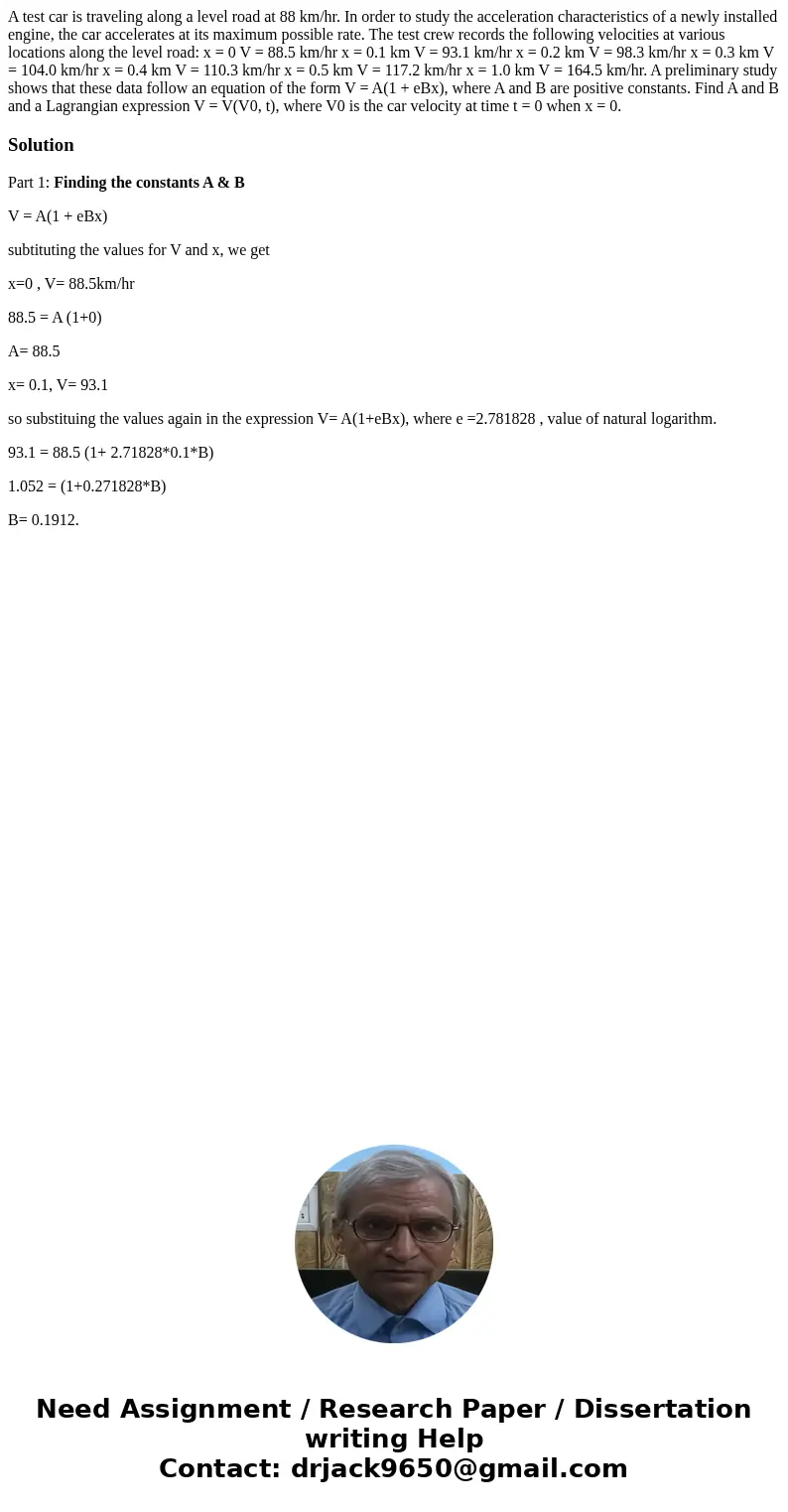A test car is traveling along a level road at 88 kmhr In ord
A test car is traveling along a level road at 88 km/hr. In order to study the acceleration characteristics of a newly installed engine, the car accelerates at its maximum possible rate. The test crew records the following velocities at various locations along the level road: x = 0 V = 88.5 km/hr x = 0.1 km V = 93.1 km/hr x = 0.2 km V = 98.3 km/hr x = 0.3 km V = 104.0 km/hr x = 0.4 km V = 110.3 km/hr x = 0.5 km V = 117.2 km/hr x = 1.0 km V = 164.5 km/hr. A preliminary study shows that these data follow an equation of the form V = A(1 + eBx), where A and B are positive constants. Find A and B and a Lagrangian expression V = V(V0, t), where V0 is the car velocity at time t = 0 when x = 0.
Solution
Part 1: Finding the constants A & B
V = A(1 + eBx)
subtituting the values for V and x, we get
x=0 , V= 88.5km/hr
88.5 = A (1+0)
A= 88.5
x= 0.1, V= 93.1
so substituing the values again in the expression V= A(1+eBx), where e =2.781828 , value of natural logarithm.
93.1 = 88.5 (1+ 2.71828*0.1*B)
1.052 = (1+0.271828*B)
B= 0.1912.

 Homework Sourse
Homework Sourse